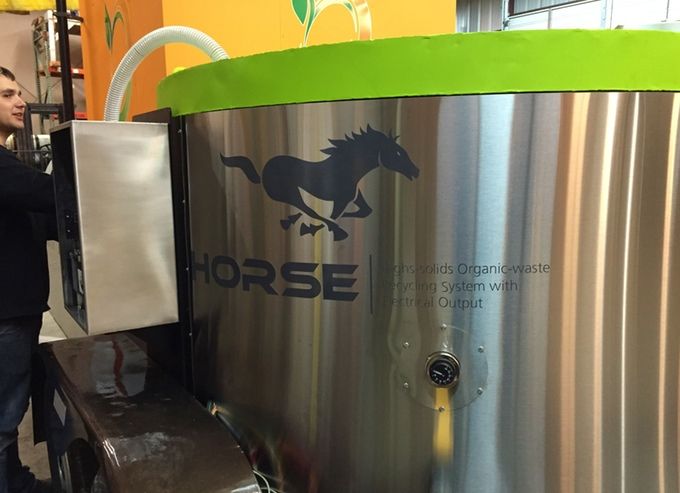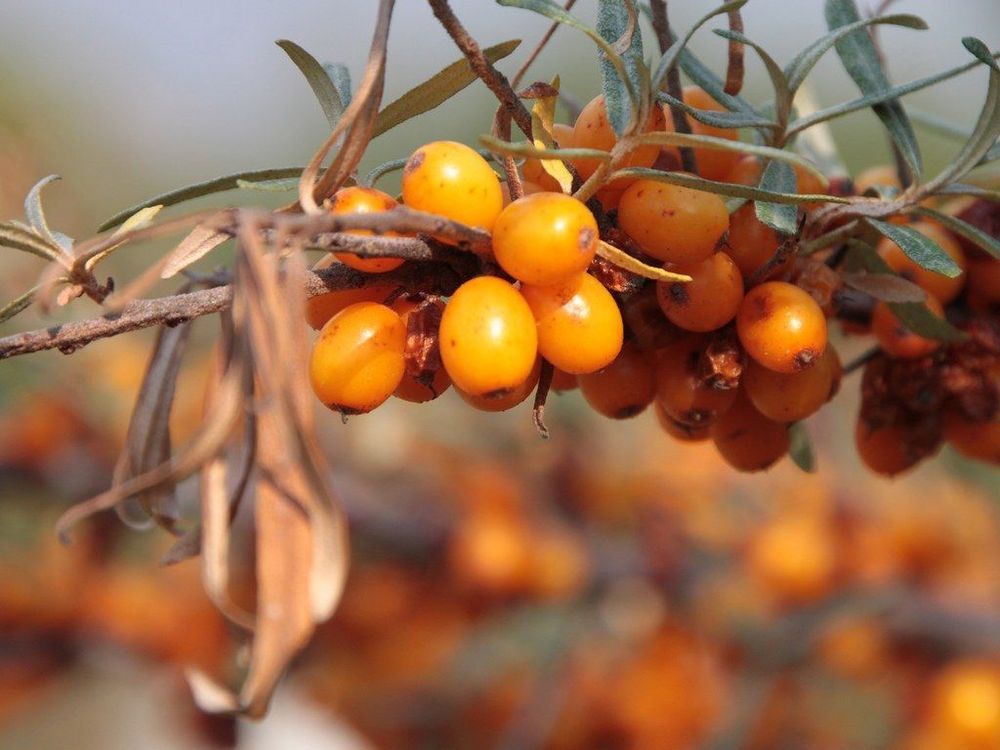Nevertheless, its approach is often criticized as too labour-intensive, complex and hard to scale. Several of these issues could be solved with technology, enabling a more widespread use of permaculture as a viable option for future agriculture.



Many people in the Northwest separate out their table scraps, wilted leaves and old fruit, carting them off eventually to a compost bin or joining their grass clippings and pruning remains in the green waste bin. In the City of Seattle, food waste is required to be separated from garbage.
But most of our actions still revolve around a simple concept: Collect your household waste, sit it on the curb, and somebody will come and pick it up. Businesses do the same thing, just on a larger scale. We have applied industrial-age logic to waste: create a production line that starts at a home or business, automate as many of the tasks as possible, and coordinate through centrally managed processes and destinations.
This centralized approach to waste collection is labor and energy intensive, and it doesn’t give back much.

#Circa2018
The world’s largest meat processing company begins experimenting with machine learning in their plants. Developing and implementing these smart machines, capable of performing skilled and dexterous tasks, is pushing the current boundaries of automation.
JBS is the world’s largest meat processing company. With revenues of over $51 billion, it operates over 300 production units worldwide specializing in the processing of pork, beef, poultry, and lamb [1]. As meat and protein remain a mostly commoditized industry, JBS continually strives to maximize efficiency in all aspects of the value chain. To increase its processing efficiencies and worker safety, JBS bought a controlling share of New Zealand based Scott Technology, an automation and robotics company in late 2015 [2]. This move accelerated the implementation of machine learning in meat processing plants.


German researchers have identified a strain of bacterium that not only breaks down toxic plastic, but also uses it as food to fuel the process, according to The Guardian.
The scientists discovered the strain of bacteria, known as pseudomonas bacteria, at a dump site loaded with plastic waste, where they noticed that it was attacking polyurethane. Polyurethane’s are ubiquitous in plastic products because they are pliable and durable. However, when they reach the end of their usefulness and end up in landfills, they decompose slowly and slowly release toxic chemicals into the soil as they degrade. They are also notoriously difficult to recycle, according to Courthouse News.

O,.o I used vitamin c and a probiotic it seemed to work well. I also had a flu shot for the year. Besides eating well and staying healthy not much is needed. It is sorta like the flu as much as I can see. I am no doctor but that worked for me.
Korean scientists claim that a lactic acid bacteria from sea buckthorn berries, could potentially inhibit the proliferation of SARS-CoV-2 by repressing purine activation.
Lactobacillus species in the gut microbiota have been found to block pro-inflammatory cytokines to inhibit harmful bacteria like Helicobacter pylori. While studying similar mechanisms against bladder inflammation (cystitis) causing E. coli, a team led by Professor Hana Yoon of Ewha Womans University Medical Center in Seoul, found abundant amounts of Lactobacillus gasseri present in the fermented extracts of sea buckthorn berries.
The probiotic has now been found to repress the activation of purine thereby preventing the SARS-CoV-2 from proliferating. Purine is an important compound required for nucleotide formation. Recent studies have found that the new coronavirus attacks purines in order to form its spike proteins and invade normal cells. The Korean team also found that the berries had several antioxidants, minerals, amino acids, and two other bacteria, Streptococcus thermophilus, and Lactobacillus rhamnosus that use the same binding site as that of SARS-CoV-2.
Non-thermal (or cold) plasma has been around for years. A version of this technology is incorporated into power plants to stop particles being released into the atmosphere. It can also be used to decontaminate food.
Now, researchers have developed an exciting new use for the stuff – the eradication of potentially dangerous viruses floating in the air.
Indeed, cold plasma is so good at its job, it can kill 99.9 percent of airborne viruses, researchers at the University of Michigan found. Their research is published in the Journal of Physics D: Applied Physics.

‘Through advances in medical devices and synthetic biology, DARPA’s new Advanced Acclimation and Protection Tool for Environmental Readiness (ADAPTER) program aims to develop a travel adapter for the human body, an implantable or ingestible bioelectronic carrier that can provide warfighters control over their own physiology. The integrated system will be designed to entrain the sleep cycle – either to a new time zone or back to a normal sleep pattern after night missions – and eliminate bacteria that cause traveler’s diarrhea after ingestion of contaminated food and water,’ reads a DARPA statement on the new device.”
The adapter is meant to regulate sleep patterns and protect against diarrhea.

The COVID-19 pandemic is a stark reminder that we move through a world shaped by unseen life. Bacteria, viruses, and other microscopic organisms regulate the Earth’s vital functions and resources, from the air we breathe to all our food and most of our energy sources. An estimated one-third of the Earth’s microbes are literally hidden, buried in sediments deep below the ocean floor. Now, scientists have shown that these “deep biosphere” microbes aren’t staying put but are bubbling up to the ocean floor along with fluids from buried petroleum reservoirs. These hitchhikers in petroleum seeps are diversifying the microbial community that thrives at the seafloor, impacting deep-sea processes, such as carbon cycling, that have global implications.
“This study confirms that petroleum seeps are a conduit for transporting life from the deep biosphere to the seafloor,” says co-author Emil Ruff, a scientist at the Marine Biological Laboratory (MBL), Woods Hole. The study, led by Anirban Chakraborty and Casey Hubert of the University of Calgary, is published this week in Proceedings of the National Academy of Sciences.
The team analyzed 172 seafloor sediment samples from the eastern Gulf of Mexico that had been collected as part of a 2011 survey for the oil industry. A fraction of these samples contained migrated gaseous hydrocarbons, the chief components of oil and gas. These petroleum seeps on the ocean floor harbored distinct microbial communities featuring bacteria and archaea that are well-known inhabitants of deep biosphere sediments.

Maria became the very first COVID-19 patient to use Stem Cell Neurotherapy for COVID-19. In about 5 days, she will began to feel the healing effects of generating new lung cells which will eliminate her breathing problems.
We repurposed some tools from the Stem Cell Therapy for Cancer/Brain Tumor. Those tools are T-Cells, B-Cells, and Natural Killer Cells. Instead of programming those cancer killing cells to attack cancer cells, we have programmed them to seek out, identify, attack, and destroy all the Coronavirus cells in the entire body.
Stem Cell Neurotherapy sends therapeutic messages, e.g., “your stem cells are transforming into new cells for the lungs, liver, and kidneys” to the DNA inside the nucleus of stem cells. Inside the nucleus, the DNA receives the message and transmits it to the RNA, which translates the message into genetic code.
The genes inside the stem cells transmit the coded message to the proteins, which are converted by the mitochondria into ATP, which provides the energy for the coded message to transform the stem cells into a new set of lung cells, as well as new cells for the kidneys and liver.
These new cells in the lungs, kidneys, and liver will replace the cells that were infected by the COVID-19 virus. This results in the elimination of the coughing, fever, headaches, diarrhea, and breathing problems.
I’m reaching out with great humility, like a great many people are these days, to see if anyone has it within their means to help me directly or indirectly. As an artist, teaching in the New York City school system mostly working children in ESL and Special Needs, my work is seasonal and I am an independent contractor. This means no benefits even after close to 10 years in the same “job”, and from a complicated financial situation with my husband, neither of us has health insurance, everything is out of pocket for us. I’m not eligible for unemployment due to being a contractor. My gigs for this semester totaling almost $5000 for NYC schools just evaporated in the blink of an eye, but would have covered the cost my everyday healthcare/rent/etc until September. Things like medicines and supplements, healthy food that help control my Essential Tremor(neurological disease) and anxiety and vision care that allow me to function as an artist and make a meager living will be eliminated if we want to keep a roof over our heads. And now due to restrictions in NYC, my husband could be out of work by tomorrow(also contract work with no-unemployment benefits). If you can donate even the smallest token it would be of great help. Any amount would help me to weather the next several months of the NYC lockdown. If you feel strange donating cash, please take a look at the reproductions of my art, or maybe even buy a gift card for someone that might like my art here: opticvoid.com